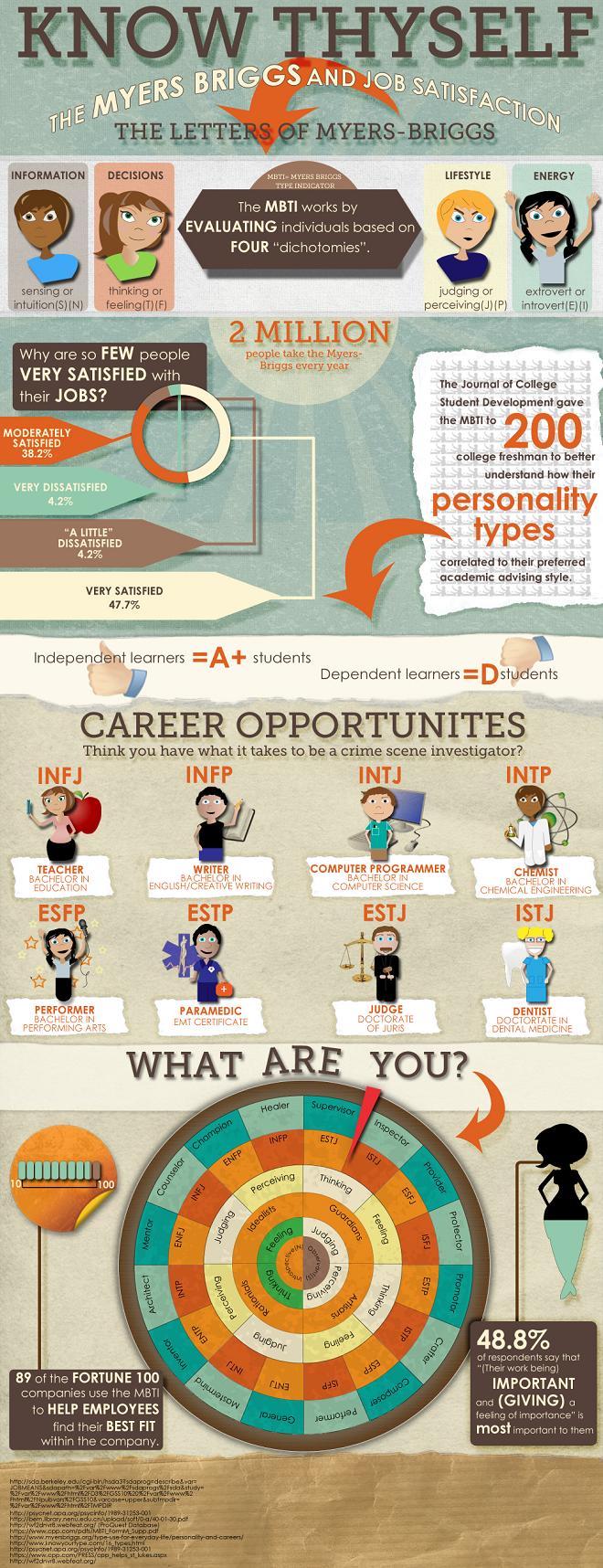Have you ever heard of the Myers and Briggs personality test? It is a psychology test that Carl Jung’s and Isabel Briggs Myers designed to approach personality, how people perceive the world, and make their decisions. It actually opens up your eyes about yourself because you start to realize that not everyone has the same thought process and decision making process that you do. It has become the gold standard of psychological assessments, used in businesses, government agencies and educational institutions. Along the way, it has spawned a multimillion-dollar business around its simple concept that everyone fits one of 16 personality types (Source). Many businesses use the personality test, especially those with training-intensive programs, to help employees better understand themselves, as well as recognizing their strengths and weaknesses. Here is a description of the four letters:
- First Letter: It will be either Extroverted (E) or Introverted (I).
- Second Letter (How do you take in information?): It will be either Intuition (N) or (S) Sensing. People with the Sensing function have a tendency not to trust “hunches” or “intuition”… they trust concrete and present evidence more. People with the Intuition function tend to trust abstract and theoretical information more. They are more likely to collect information gathered in the past and put the puzzle pieces together while seeing the bigger picture of things.
- Third Letter (How do you make decisions?): It will be either Thinking (T) or Feeling (F).
- Fourth Letter (How Do You Organize Your World?): It will be either Perceiving (P) or Judging (J).
Jung identified two pairs of psychological functions:
- The two perceiving functions, sensing and intuition
- The two judging functions, thinking and feeling
According to Jung’s typology model, each person uses one of these four functions more dominantly and proficiently than the other three; however, all four functions are used at different times depending on the circumstances (Source).
When you take the test, it will allow you to see what exactly your strengths and weaknesses are, possible career goals, how to better communicate with other people (especially in the workplace and personal relationships) and things like that. After you take the test, if you find yourself wholeheartedly agreeing to the entire description, you found your personality type. I actually had to take mine several times because the first two times, the personality type didn’t quite sound like me. Some of the questions take a little thought to answer so it’s okay to take your time while taking this test.
Keep in mind that this test has a lot of controversy behind it. Although a lot of businesses use it to improve training processes and workplace relations, many psychologists have difficulty putting their faith into the Myers and Briggs personality test. Pyschologists believe that it isn’t good to throw people into specific categories like introverted or extroverted because there are times where every single person can shift back and forth, some more than others. I still would recommend it because it allows you to reflect on yourself and help you better understand yourself. The career path recommendations for each type aren’t set in stone, so if your personality type recommends a career path that you aren’t doing or don’t want to do, that’s okay. Pick whatever career you desire while knowing what different aspects of your personality are.
The results being so accurate (for me, at least) blew me away and I would definitely recommend it to people trying to figure out themselves. Knowing your personality type can help you better understand yourself, strengths, weaknesses, how to describe yourself to potential employers, what areas need improvement, and so much more.













































